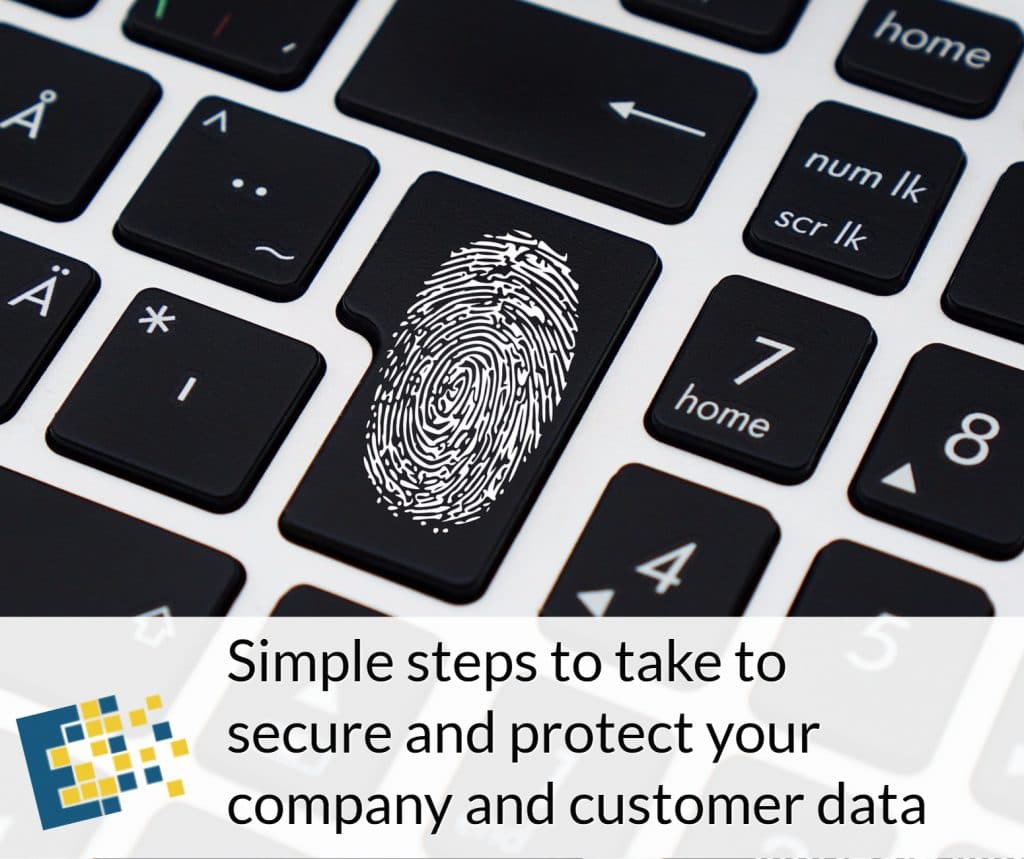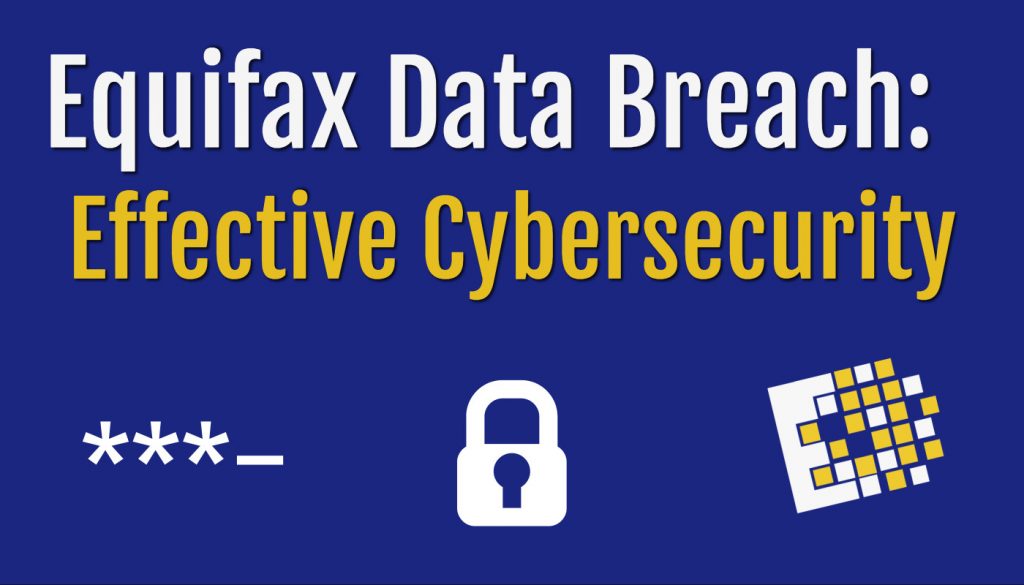The Equifax data breach, and attacks like it have everyone checking their cybersecurity. This attack left 143 million credit records exposed. In today’s world, cyber attacks are a part of reality. A company cannot just go back to the stone age and try to remain competitive. Fortunately, that is not necessary. There are some simple steps to take to secure and protect your company and customer data. You do not have to go to tremendous measures and you do not have to be especially tech savvy.
 Step 1: Backup Your Data
Step 1: Backup Your Data
Backing up data is the golden rule of IT security. There are countless ways to take this simple step, but either way, it is an absolute must. Regardless of the number of security measures you have in place, there is always risk. Valuable data should be backed up regularly. This could mean making use of cloud storage, external hard drives, USBs, or remote servers. One great way to stay ahead of this step is to set up regular, automatic backups. They can be done daily, weekly, or monthly, depending on the amount of new data being stored.
Step 2: Passwords
All passwords associated with your company and network should be strong and should be changed regularly. Not only do weak and stagnant passwords expose company information, but it can also put individuals at risk, as “cybercriminals” may try to use it on other accounts. Many people use the same password for multiple accounts, on multiple websites. After the last Yahoo breach, stolen email passwords were also used in attempt to access users’ bank accounts.
Unfortunately, the average person has too many accounts to want to create and remember different passwords. A great solution is to use a password manager app that allows you to store all of your passwords in a secure location, where only you can reference them. When you do this, you are able to create more elaborate combinations of numbers, symbols, and characters.
Tip: The Basics of Making Passwords
Tip: How to remember all the passwords you need in your life
Step 3: Antivirus and Antimalware
Having antivirus and antimalware is crucial. There are countless threats looming on websites, in emails, and in advertisements. Viruses and malware can be hidden in places you least expect and can infiltrate your mobile phones, desktops, laptops, and tablets. A lack of protective software would be like leaving the door to a safe wide open.
There are many trusted antivirus and antimalware resources. It is best to use a full software suite of services, which can also include encryption and firewall. While it may sound advanced, and you may even be thinking that it is more than you need, you can be assured that it is not over the top. Antivirus and Antimalware are just basics in data security. It is a simple step in protecting yourself from the attacks that are hiding all throughout websites and files.
You should also learn how to protect yourself from phishing and scams:
Tip: Keeping Secure: Protect Yourself from Scammers Goin’ Phishin’
Step 4: Two-Step Authentication
Adding a second layer of defense is always a great way to deter attackers. All important accounts with sensitive information should have two-step authentication. This could mean security questions, a verification text or email, or even biometric fingerprint or facial scan. The two-step process is designed to confirm that you and you alone are accessing your most valuable accounts.
Step 5: Updated Software
Keep software updated is helpful in a number of ways; one of which is security. Attacks are always changing and security efforts have to as well. Most softwares have built in forms of security. When they are updated, there may be security patches and improvement. Outdated softwares and operating systems are generally less secure for this reason. The WannaCry ransomware attack that infected around 230,000 Windows users was a result of this exact problem.
An easy solution is to set automatic updates for your IT software and operating systems. While not all software allows for automatic updates, many plug-ins, browsers, and other important softwares do. For those you are not able to set automatically, check regularly for updates. This simple step can have a huge impact on your overall security.
Tip:
Even if you have not been personally affected by the Equifax breach, it is a good idea to create a “credit freeze” through credit reporting agencies. You can require a PIN number (personal identification number) whenever your credit report is accessed. You should also check your bank statements and credit history regularly for any suspicious activity.
Equifax data breach: How to freeze your credit
 CCNY Tech is an IT sales and services company. For over 25 years, CCNY Tech has been supplying IT equipment as well as providing maintenance and IT recycling services. Partnering with some of the top brands in the industry, they are experts in equipment and custom configurations. CCNY Tech IT professionals provides custom solutions to businesses of all sizes. Learn more at ccnytech.com.
CCNY Tech is an IT sales and services company. For over 25 years, CCNY Tech has been supplying IT equipment as well as providing maintenance and IT recycling services. Partnering with some of the top brands in the industry, they are experts in equipment and custom configurations. CCNY Tech IT professionals provides custom solutions to businesses of all sizes. Learn more at ccnytech.com.
